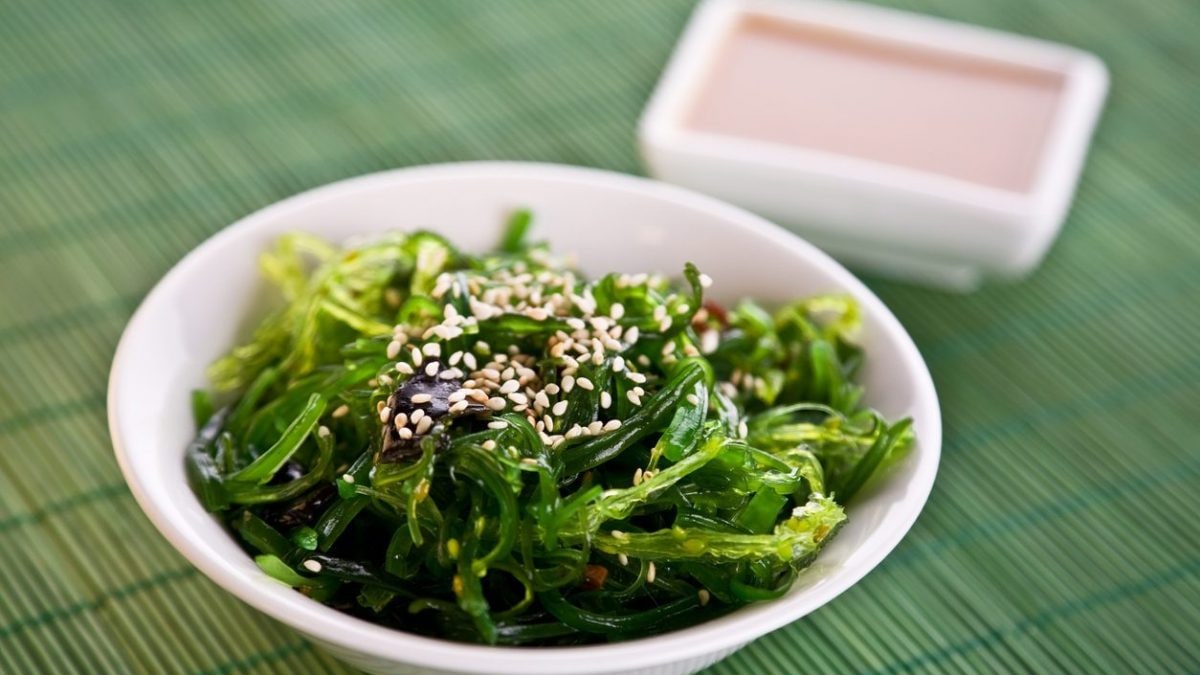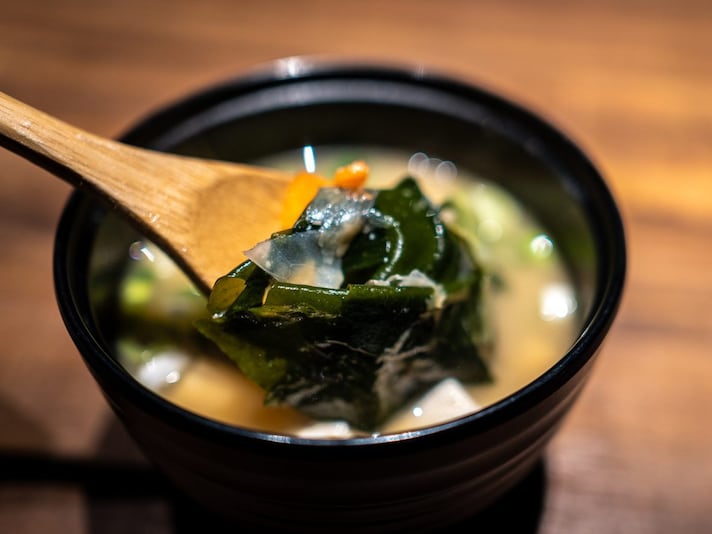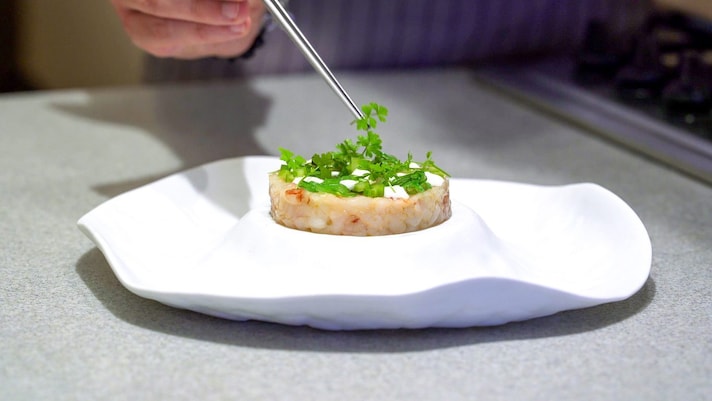
You may have tasted it in Asian restaurants, where it's often served as a small appetizer. We're talking about wakame seaweed, and if you're unfamiliar with it, this article will help you learn everything you need to know. Versatile, flavorful, and capable of bringing a little piece of the ocean right to your plate, it's a gem of Eastern cuisine, and over the years, it's increasingly making its way into Western kitchens, especially in the U.S.. Dark green in color and with a slightly rubbery texture, wakame seaweed is a marine plant harvested along the coasts of Japan, Korea, and China. It's an edible brown seaweed belonging to the Undariaceae family, but once soaked or cooked, it takes on a bright green color that makes it recognizable even to the untrained eye. A cornerstone of Japanese cuisine, let's discover together how it's used and the origins of this product.
What is Wakame Seaweed?
A discreet protagonist of Asian cuisine, wakame seaweed has its roots in the seas of the Far East, where it grows abundantly wild. It's not alone, however: in the North Atlantic, there's a European "cousin" known as Alaria esculenta, which the English call wing kelp, debberlocks, or murlins. The two seaweeds, while different, share a similar role in their respective culinary cultures, as both are prized for their nutritional profile and sea-fresh flavor.

In Japan, wakame is considered a fresh vegetable, so much so that it can be found alongside carrots, daikon, or cabbage in local markets. Here, it's already blanched to make it ready to eat. When it's exported, the process is different: it's dried, packaged, and shipped worldwide. To return it to "normal" condition, simply soak it and you're done. Botanically, all seaweed thrives in cold, flowing water, and according to experts, the more turbulent the water, the more valuable the seaweed.

Because of these characteristics, since the mid-1980s, France has adopted wakame, with the Brittany coast of Finistère, in the northwest of the country, becoming one of the first European centers for the cultivation of this Asian seaweed. It grows at depths of 6 to 12 meters, with its peak growth coinciding with the winter months. Harvesting takes place in spring, using traditional methods that respect the sea. A boat approaches the growing area and, using long rakes or hooks attached to ropes, the seaweed is collected and delicately detached from the rocks to which it adheres.
The Benefits of Wakame Seaweed
Wakame seaweed (Undaria pinnatifida) is a brown seaweed rich in essential nutrients such as minerals (iodine, calcium, magnesium, iron), dietary fiber (both soluble and insoluble, including laminarin, fucoidan, and alginates), as well as vitamins (A, C, E, K, and B vitamins) and omega-3 fatty acids (EPA). Its bioactive compounds include fucoxanthin, a carotenoid with antioxidant and metabolic potential, and fucoidan, a sulfated polysaccharide with various biological activities. Here are the main benefits of wakame seaweed.
- Weight loss support. The fucoxanthin in wakame has been shown, in mouse studies, to stimulate the expression of the UCP1 protein in white adipose tissue, promoting fat reduction.
- Plant-based source of omega-3 fatty acids (EPA). Wakame is one of the richest vegetarian sources of EPA: every 100 kcal provides over 400 mg of this essential fatty acid, which is beneficial for cardiovascular and neurological health.
- Improved gut health. The soluble (laminarin, fucoidan, alginates) and insoluble (cellulose) fibers in wakame can help regulate digestion and act as prebiotics, stimulating the growth of beneficial gut bacteria.
- Regulates thyroid function. The high concentration of iodine, along with calcium and magnesium, supports thyroid metabolism and mineral balance in the body.
Flavors and Uses in The Kitchen
As mentioned previously, the flavor of wakame seaweed is unmistakably reminiscent of the sea, with salty notes and a hazelnut aftertaste. It is rich in umami , that "fifth taste" so dear to Japanese cuisine that gives depth and complexity to dishes, which is why it is so popular in its homeland.
Now that you've learned a lot about this seaweed, it's important to also know its culinary uses. First, it's possible to buy it fresh, dried, and frozen. It can be used in soups, such as miso soup, but also to enrich any vegetable broth. In the U.S., we know it as a salad, in the so-called goma wakame, in which, after soaking, it is seasoned with rice vinegar, sesame seeds, and a pinch of sugar. It's also often found in poke or some sushi rolls.

You should know that the use of wakame seaweed is not a recent trend. Its history dates back to ancient times, when it was considered a precious gift and often offered to temples and noble courts. In Korea, however, it was already consumed during the Three Kingdoms period (until the 7th century), and the tradition of eating wakame soup for birthdays is still alive today.
;Resize,width=767;)
